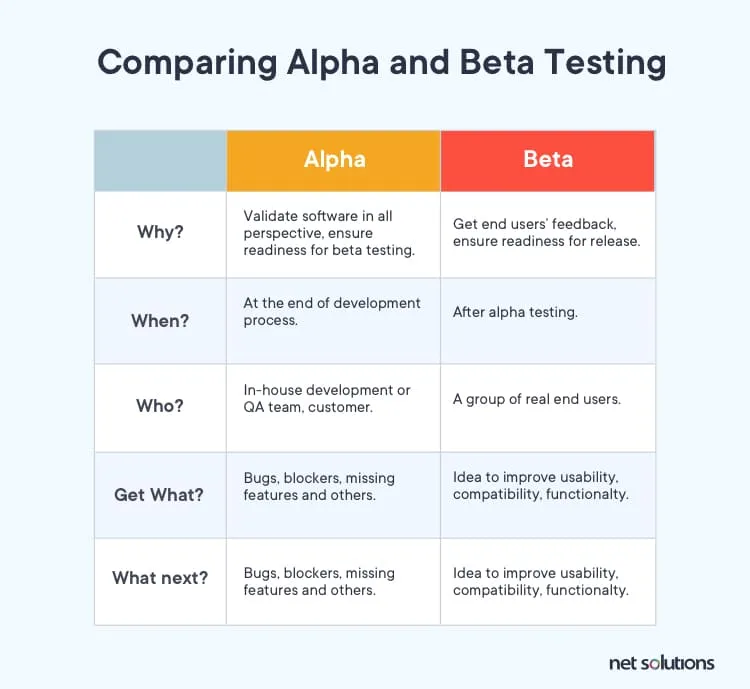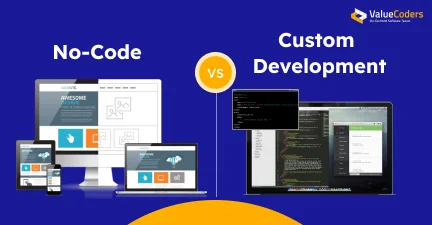Everyone has ideas. But do we realize how difficult thriving, workable products or services? Indeed, a hard nut to crack. You need to be innovative while still delivering worth a penny.
According to McKinsey Global Institute data, only 1 out of 7 ideas result in a successful product, and the failure rates for newly launched products are between 25%-45%. Using a structured approach, you’ll stand a greater chance of avoiding any pitfalls resulting in your new product’s failure.
As said by late Apple founder Steve Jobs: “People are crazy enough to think they can change the world are the ones who do.”
But that does not guarantee that the new product will sell like hotcakes. You need to invest time with good command of customer & market needs, your competitors, and offering products with clear value to beat the odds.
This is where the 7 Stages Of Product Development Help:
Source: Google
Involving customers at the early stage helps NPD process and understand their problem before executing ideas into process, tools, and technology.
Necessity leads to invention. That’s where the New Product development Process(NDP) will help. A very simplified process to convert ideas into a tested concept into viable products and eliminate non-feasible ideas.
That’s where the new product development process (NDP) comes into play. This process is designed to aid the conversion of new and untested concepts into viable products and market them while allowing you to weed out non-feasible ideas.
What Is New Product Development?
New product development is all about converting an idea into a business-strategic workable software development product.
The New Product Development (NPD) process involves researching existing products in the market with a customer-centric approach, feasibility of the idea, delivering working software and latching on the market opportunities, and delivering working software.
Product development is an umbrella term that covers six stages of SDLC and working and has a POC. The New Product Development approach revolves around an entirely new idea, where the uncertainty around its development and the next option remains high. Software product development companies are progressively exploring NPD facets to address development glitches.
Since it is about releasing the latest software product, you should seek services from leading software product development services; then, always a fair idea to join hands with leading firms.
Get free consultation and let us know your project idea to turn it into an amazing digital product.
Stage 1: Idea Generation
Emphasize On Customer Problems: A good entrepreneur can scan the issues faced by the target audiences. You can always identify the issues the customer is facing.
a) Personal Roadblocks
Whether you’re an entrepreneur or a buyer, the customer’s tendency always remains the same. All you need to do is prioritize one problem, derive a solution, and tag it” one for all. If you’re looking to set the tone right before product development, subscribing to product design and development companies could help.
You need to apply your brain behind digital offerings. The communication gap often leads to many problems—– and is the biggest hurdle towards the path to productivity.
Building a product and launching it can have some ups and downs, but there should focus on making up a great business idea.
b) Qualify Each Of The Listed Problems
Here is the 4 U strategy:
Let’s discuss each of these aspects in detail.
Unworkable: Figure out whether the brainstormed product concepts will address some real problems. Will the product be able to fill the existing customer experience gaps and will achieve product-market fit?
Unavoidable: Is the problem that you are working on inevitable to the extent that it becomes mandatory to comply? You need to find out whether solving that problem is a choice or a compulsion.
Urgent: Is the problem urgent and is highly demandable by the target market? If the answer is affirmative, this could be your chance to cover the white space in the market with your original product.
Underserved: Are there no available products that address the existing user problems? Look for the whitespace in the market and hold on to the idea that looks promising.
c) Emerging With Possible Solutions
Once the problem gets figured out, you can start looking for possible solutions with a product development firm to produce feasible solutions. For every new user problem, there’ll be a new NPD service.
If you have figured out the problem, it’s time to look for possible solutions. For every user problem, there ought to be potential new product development opportunities.
Here’s the workflow that starts from a problem and ends up with strategizing around the solution.
d) Narrowing Down The Problems
Categorize all shortlisted problems using a comparison chart with solutions. Circulate the findings across the organizational structure to come up with a viable problem set.
In case stakeholders are reserved, you can Replicate, Re-purpose, and with an upgrade approach.
Replicate: You can create a similar product with. a competitor and launch it in the new market conditions. Once MVP(Minimum Viable Product) is launched, then you should prioritize out-of-the-box features.
Re-Purpose: You can rewire the existing business model and present it in the most viable manner.
It focuses on rewiring an existing business model—for instance, LinkedIn Learning & e-learning platform.
Upgrading: This concept of NPD revolves around the existing model with some improvements. Be it performance, speed, or addressing challenges of competitors with added functionalities.
Also Read: Top 20 Fantastic Software Ideas in 2021 to Nurture Start-Up Dreams
Stage 2: Idea Screening
The new product development stage is about choosing the idea that gives you the highest potential for success. You can put all your ideas collectively for internal review, i.e., seek the advice of people with industry knowledge and experience.
When developing a new product idea, leverage the advantage of POC (Proof of Concept) to check the feasibility of the concept. One can’t zero on an idea that is not technically feasible to build.
You can consult the Agile development teams—–expertise helps understand the technical side of things and helps shortlist ideas worth building a PoC. In India, software product development services leading-age technology solutions give the prospects a smooth development experience
SWOT (Strengths, Weaknesses, Opportunities & Threats) is prevalent and good practice while shortlisting New Product development ideas.
The agile development team, product owner, scrum master, and product manager go through a detailed analysis and shortlist ideas——— opportunities and strengths, threats picture and weaknesses.
Conducting a SWOT is relatively simple, and you need a simple 2×2 grid to get started:
SWOT Analysis Template | New Product Development
In all, your New Product Development idea should be unique so that you do not have to convince people to pay for it.
Image Source: Google
Stage 3: Concept Development & Testing
Evaluation of value proposition is the first step towards testing and development. It ensures you assess the problem in advance and can course-correct earlier. It saves from piling new technical debts.
These steps easy-to-follow steps include :
- Quantifying gain/pain Ratio
- Conducting a competitor analysis
- Enlisting major product features
- Creating a value proposition chart
Get free consultation and let us know your project idea to turn it into an amazing digital product.
Stage 4: Value Proposition Strategy
A great asset of product development companies in India before they launch any product. You should be very particular about the capabilities of new products. Once you are good to go with the idea’s utility, you can pitch it clearly to the end-user. It ensures that a product or service positions around customer exact values and needs.
In the form of a value proposition, you can showcase what your product is capable of doing.
Stage 5:Concept Testing
Once you are ready with the proposition in software product development, you can now present it to the set of selected customers. The key is to have trust and belief in your ideas. Since the concept doesn’t look promising, you’ll repeat steps to develop a new project.
You can get meaningful insight by focusing on four critical aspects:
- Identification of the focus group, i.e., people who would benefit from the new product under development
- Assessment of other alternatives to be offered to the focus group
- Devising a foolproof plan for the New Product Development right from features, marketing, pricing, and distribution
- Integration of unique product features into the customer’s mind for findability and discoverability.
Image Source: Google
Stage 6: Product Development
When product development software companies start, execution of ideas occurs, the business strategy is documented —- you can go ahead with the product development cycle.
The New Product Development starts with developing the prototype followed by MVP.
1. Prototype
Creation of UI/UX of the product and share with the stakeholders helps visualize the product’s feasibility in the marketplace.
2. Minimum Viable Product (MVP)
Using Agile for the new products gives a different look. Once the product goes through the design & steps — the product gets launched with minimal features.
Agile Product development is better than conventional. The waterfall model complements the to-and-fro movement across the development cycle and ideal for last-time changes.
Maintaining Communication & Synchronization are the key highlights of Agile Model
Stage 7: Market Testing
Steps in New Product Development aims to reduce the uncertainty revolving around the software product development, i.e., checking the viability of the new product or its marketing campaign.
There are two market testing strategies to follow:
1. Alpha Testing
This type of testing allows testing engineers to judge any product based on performance and map the marketing mix.
In case of any issues, the changes are planned and implemented before the final go-ahead.
2. Beta Testing
The selected group of customers gives unbiased feedback to the organization. It is all about listening to customers’ voices when issuing a move back to the development team for fixtures.
Here’s how Alpha and Beta testing are different from each other:
The third form of testing conveyed product validation and is called In-Home Usage Test (IIHUT). Development products are meant for intended customers who will use the products.
Get free consultation and let us know your project idea to turn it into an amazing digital product.
Last Stage: Market Entry/ Commercialization
Image Source: Google
If you go step by step as shown, nothing can stop your product from being a market-centric fit and set the stage to become a leading product development firm amidst software development services.
Here are some must-do marketing activities that will help gain traction:
- Marketing The Concept Over The Product
- Having A Brand Voice
- Market-friendly Webinars
Here are some of the main advantages you’ll gain from using the new product development process.
Create an innovative culture – a new product bring newness in ideas too. Creating a culture of innovation reaps the rewards and help business greatly.
Keep pace with your consumers – consumers can have changing demands because of no. of factors. New product development ensures you keep pace with consumers and ensure product relevance.
Discover new opportunities – by focusing on your customer’s needs and not your shareholders, you’re able to uncover new opportunities and further your business’s growth and development.
Drive higher value proposition –designing products meeting consumers needs
Improve your brand reputation – consumers are often inclined to companies and test their latest products which keep innovating.
Enjoy faster time to market – a streamlined process identifies and creates plans for any loophole in the product development cycle.
Avoid feature creep – allows better management and response to requests for intriguing features.
Avoid common pitfalls – Weed out the snares which lead to failure by identifying them first.
- Failure to meet your customers’ requirements
- Too high quotation
- Misaligned advertising
- High development and resource costs
- Stiff Competition
- Misinterpretation of the market size
Also Read: How Digital Transformation Is A Decisive Factor For Business Turnaround
Conclusion
As mentioned, an Idea is the best seed for business. Since the whole theory lies in software product development and converting new ideas into workable products, it gives you a competitive advantage and monopolizes the market.
New Product development is a step-by-step process that includes New Product development—— idea generation and screening, concept development and testing, market strategy/business analysis, product development, market entry/ commercialization.
Many product development software companies follow the thumb rule to innovate new ideas while delivering values simultaneously to attract business. A software product development firm like ValueCoders thrives your business in the software development trade since it is a 19+ offshore development firm.












